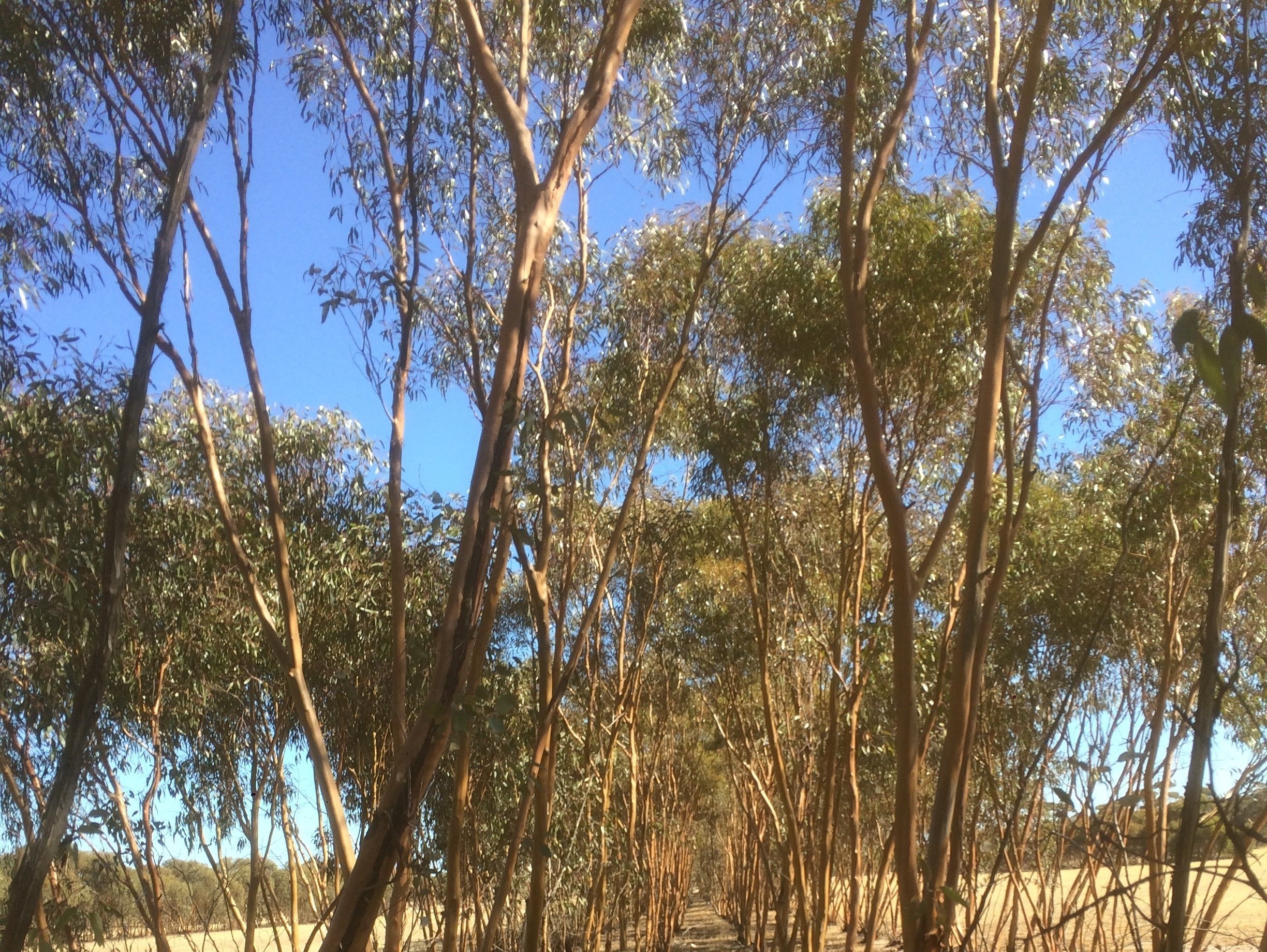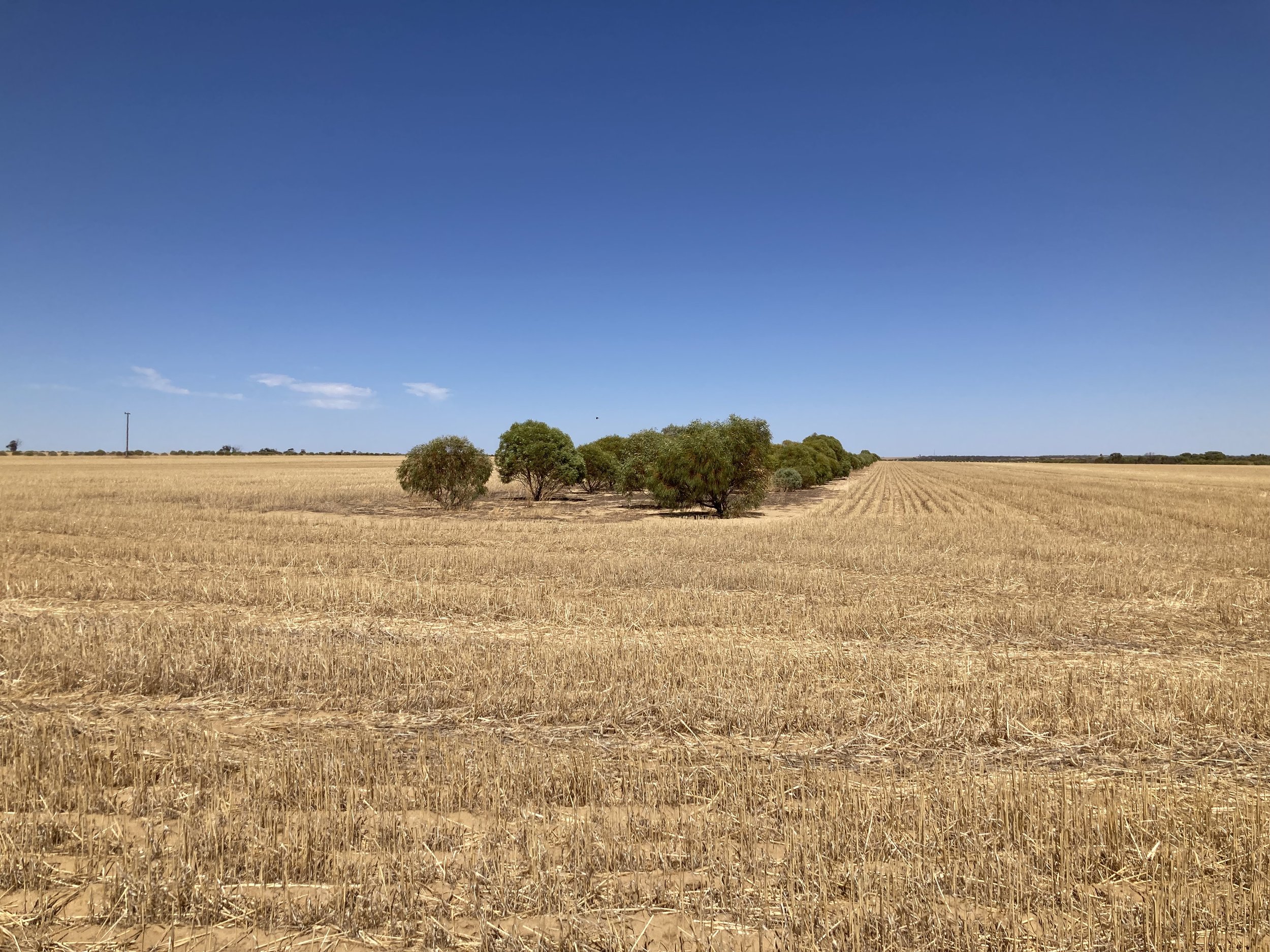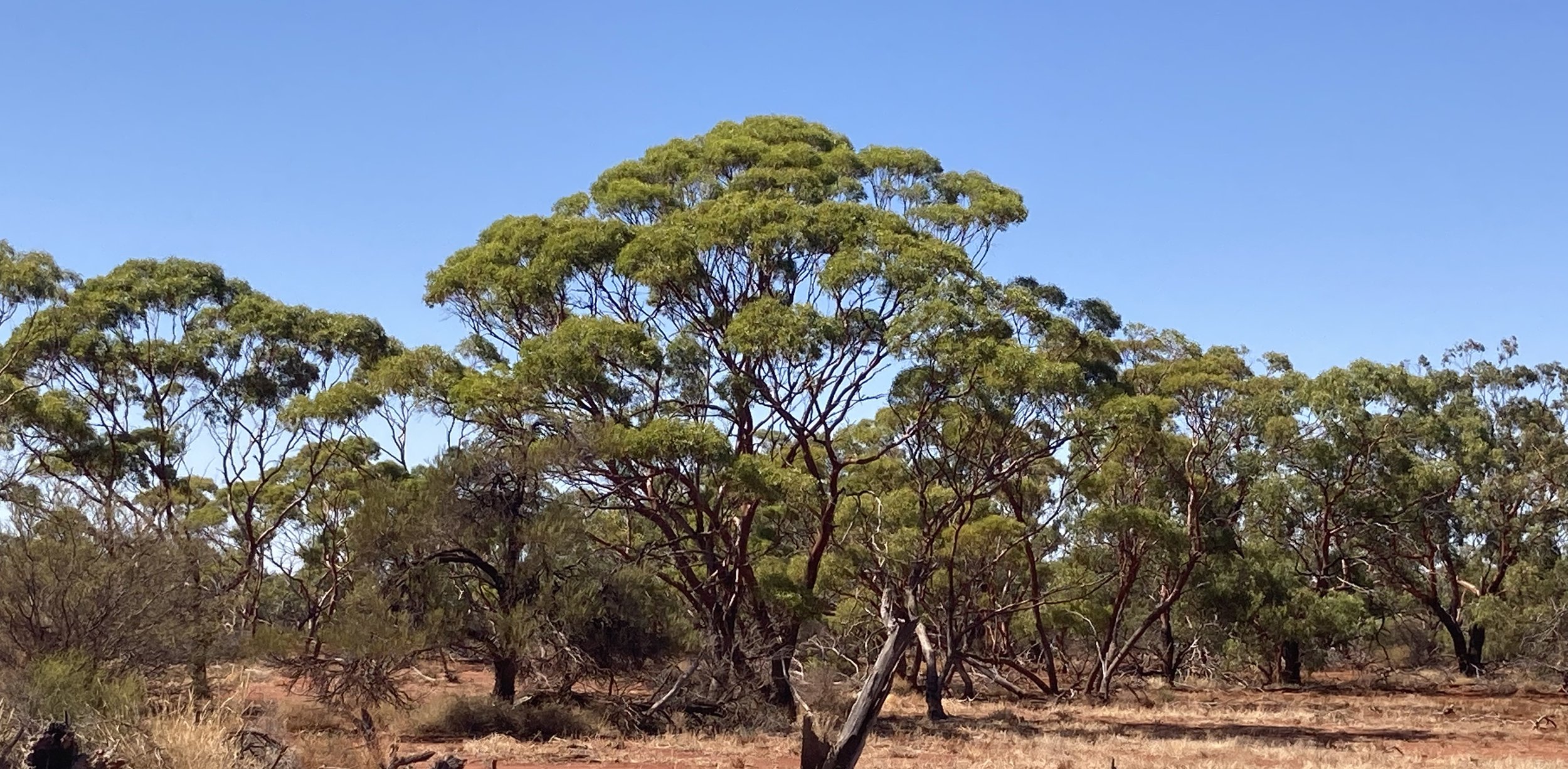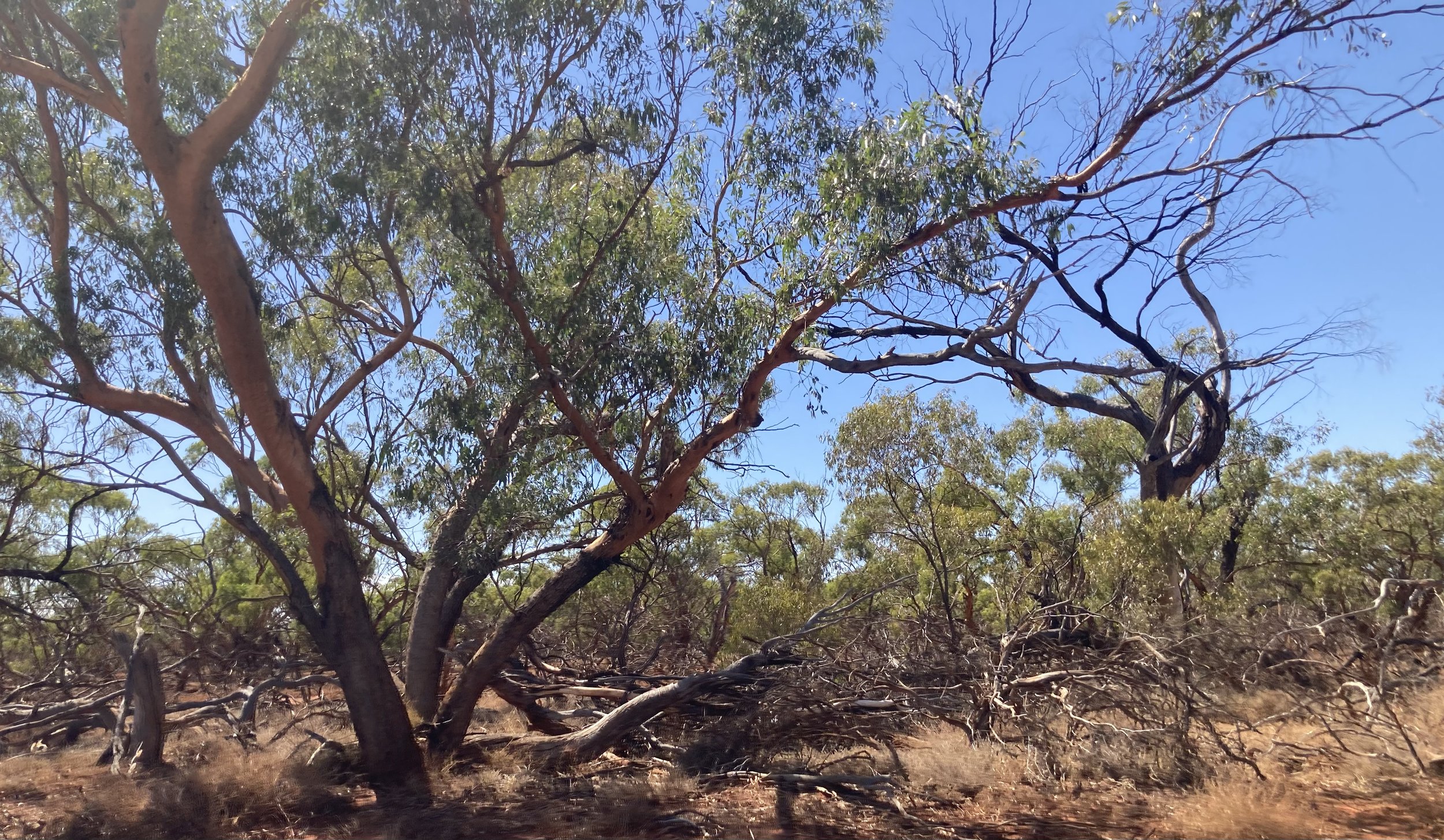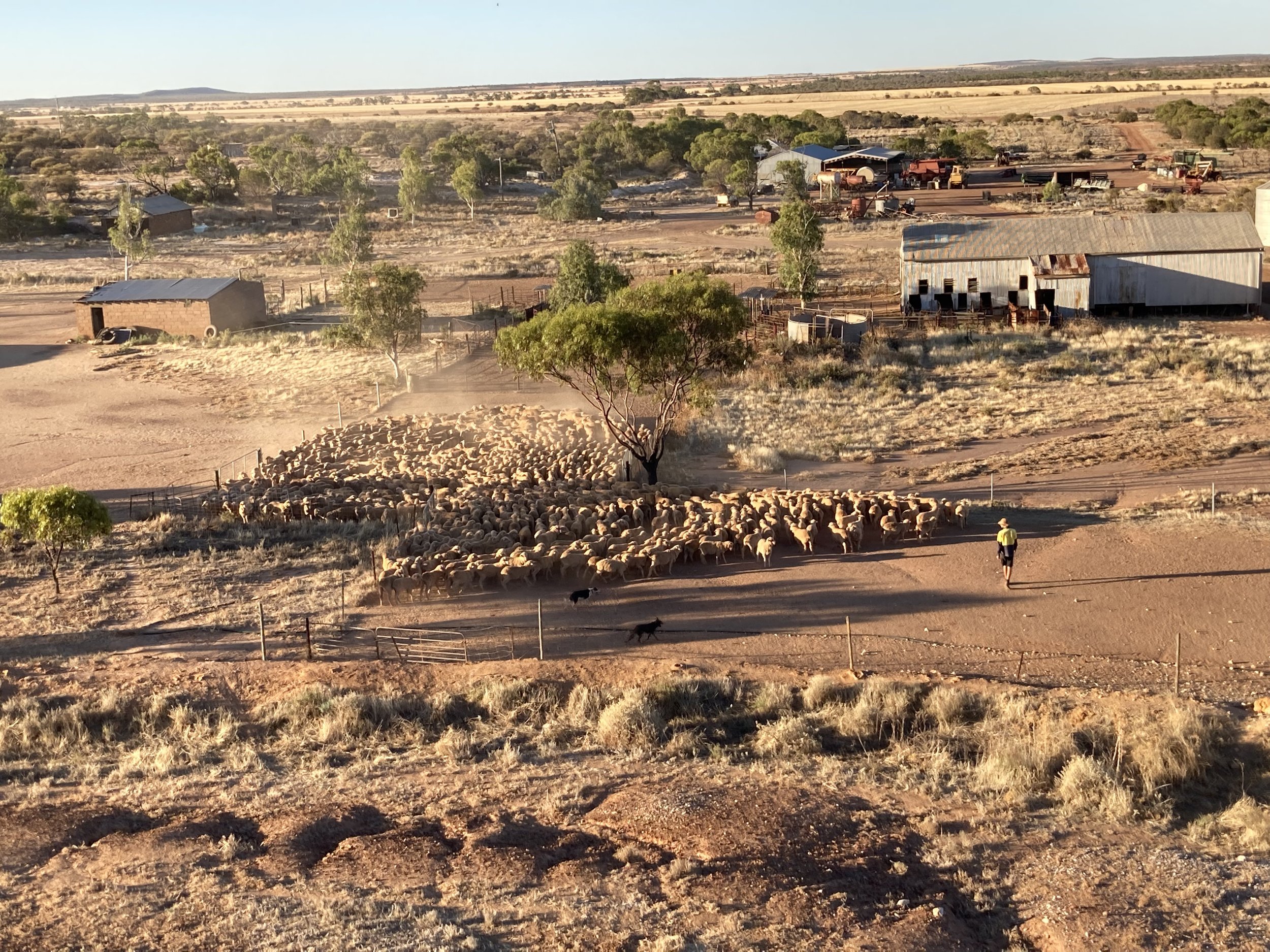
For Landowners
Caring for the land is core business for us
And so is caring about the people connected with the land. We want to bring a new business to marginal low rainfall farmland in Australia in an inclusive and respectful way. See below for an open letter from our CEO.
Are you a farmer / landowner with existing, unencumbered (owned by you) plantation trees?
Have you decided to return some of your plantation area back to pasture or cropping?
If you have cleared plantation trees and they are drying out in windrows, waiting to be burnt…
Please DO NOT burn your trees before talking to us!
We purchase dry woody biomass in the paddock, transport and store it in inert (dry, dark, well-ventilated, termite-, rot-, mould, and fungus-free and fire-proof) above ground storage vaults we call “Dry Stacks”. In Dry Stack conditions the preserved biomass retains the CO2 captured from the atmosphere in the living biomass. This is the simplest and most effective Carbon Sequestration technology invented!
Our proprietary Dry Stack technology is in the final stages of approval for the granting Carbon Dioxide Removal (CDR) credits via the Finnish Verification and Validation Body “Puro.Earth”.
Our body of long-running data on woody biomass Total Organic Carbon (TOC) and chamber gas (CH4, CO2, CO, O2, RH, T) analysis confirms the near-zero loss of carbon from our Dry Stacks for at least 100 years.
We have secured funds from a range of European, North American and Australian investors and early CDR adopters. This funding has enabled us to accelerate the development of our business.

How does it work?
We enter into a Biomass Purchase and Land Access Agreement (BPLAA) with the landowner/ farmer (see InterEarth webpage “BPLAA”) whereby we pay $20/t Eucalyptus biomass that has been chained, and / or windrowed and has a maximum of 20% moisture content.
We pick up the entire tree (including roots) from the paddock and take it to a compact storage site on-farm, which is leased from the landowner for a period of 100 years. We are responsible for the entire biomass collection, transport, storage, sampling, accreditation and monitoring process. We install gas analysers to continuously monitor the composition of Dry Stack air, and we periodically sample and analyse the stored biomass to ensure the carbon is effectively sequestered within the Dry Stack for 100 years, as required to meet Puro’s methodology specifications.
Requirements
We take any form of cleared or windrowed woody biomass; planted blue gums, pines, acacia, mallees, sugar and spotted gums and remnant native vegetation cleared for firebreaks, fence line reconstruction or building sites in accordance local legislation. Eligible trees must be unencumbered. That is owned by the farmer, and not under an existing contract with another party. We also harvest the above ground biomass of mature mallees and other coppicing trees planted in rows and available for multiple harvest-coppice-regrow-harvest cycles. Such trees must have a butt diameter of less than 200mm and height of less than 6m. This material is cleanly removed from the roots ensuring the tree coppices and vigorously regrows above ground biomass for future harvesting.
All Biomass must be located within 2kms of the Dry Stack. We have a maximum haul distance from the paddock pick-up site to the Dry Stack of 2 kilometers. We work with the landowner to determine the best location for the Dry Stacks around the farm. These locations are agreed on well before we arrive to commence work. We usually place them where they have minimal interference with normal paddock operations by utilizing areas of low productivity such as rocky or gravel outcrops, poor sand, salt affected land, or irregular shaped areas bounded by fences or remnant bush.
We usually place the dry biomass in the Dry Stack over the summer, drier months ensuring all woody biomass going into the Dry Stack is less than 20% moisture content, and free of dry rot and termites. There are no other product categories, downgrades or price penalties.
Note: Whilst InterEarth has an obvious interest in the carbon sensitive use of cleared biomass, we are in no way encouraging or incentivising farmer/landowners to clear established plantation trees. Farmer/Landowners must decide on clearing plantation trees of their own volition.

What are the risks for the farmer?
There are only 2 risks
We don’t turn up, and you have wasted your time and efforts talking to us. We are committed to keeping you informed of our schedule and do our best to ensure we do as we plan.
1.
You don’t get paid. We enter into a simple, easy to understand, legally binding agreement to pay you within 5 business days of the woody biomass being weighed in the paddock prior to it going into the Dry Stack. If you don’t get paid, the woody biomass ownership reverts to you, and it is still in your possession on your farm.
2.
The Dry Stack
Once full, the Dry Stack is packed, smoothed with chipped biomass and then a strong waterproof membrane cover is placed over it. The membrane is covered with a layer of soil to protect it from the sun, and to protect the Dry Stack from the risk of fire. All soil used to construct the Dry Stack is sourced from the farm and made available to InterEarth at no charge. The soil is usually sourced from the immediate area around the Dry Stack.
Horizontal inlet vents are placed around the bottom of the stack and vertical exhaust flues are installed down the centreline of the Stack to create an efficient natural cross-ventilation system. This system draws dry air into and through the stack, creating ideal woody biomass preservation conditions. (Shown Right)
Our biomass storage pad contains a termite proof barrier, and all the vent pipes have termi-mesh filters which also act as a guard against embers. In the unlikely event the stack becomes infested with termites or other pests it can be fumigated through the ventilation system.
All Dry Stacks are fenced to exclude wildlife and livestock. We maintain the fence for the duration of the Dry Stack lease and ensure this area is compliant with all the regulatory requirements. A Future Fund has been established to ensure funds are available to maintain and monitor the Dry Stack for the 100-year term. The Future Fund is independently audited during its lifetime to ensure funds are adequate to meet all future costs.
Under the rules of the Puro CDR methodology, we are required to have control of the Dry Stack to allow for on-going sampling, monitoring and repairs. If we don’t own the land on which the Dry Stack is located, we must lodge a subject to claim caveat (over the leased Dry Stack land) on the title of the land. This area is usually less than a hectare, even for our larger storage chambers (10,000t = 0.9ha). A Dry Stack for 1,000t is around 20m x 30m long but with larger stacks we go higher and wider, a 10,000t Dry Stack is about 30m x 300m long. The caveat means that if the land is sold the new landowner cannot claim ownership of the Dry Stack or deny us access to it.
We get carbon credits for the material that is stored in the Dry Stack once it’s been independently verified against the Methodology for Carbon Dioxide Removal, Terrestrial Storage of Biomass.
All InterEarth Dry Stack technologies, processes, and methodologies have been patented to protect our historic investment in R&D, our competitive advantage and our shareholder’s interests.
We are a WA company, employing local people.

Why partner with us
The benefits of InterEarth for farmers
A fair deal
InterEarth will be straightforward in all its dealing including those with farmers. We will agree to a fair price for land that meets our requirements. The primary contact for farmers with InterEarth will be directly with our CEO.
Land for equity option
Farmers who see InterEarth as an exciting opportunity can become investors via a land for equity swap. We will do this at a premium to the price we agree for the straight purchase of land. We are also open to this swap covering all or part of our land purchase.
We want farmers to stay around
We want people to stay in the area. Farmers will have the option to stay in their homes on any property we buy. It would be even better if farmers also join our team. InterEarth will provide a wide range of employment and career opportunities for locals.
Positive for your local community
InterEarth will create opportunities that will be good for local businesses and towns. We will not reduce local employment and make it even harder for local communities that have been suffering long term population decline. We are going to need more people on the ground, all year round.
Good for the grain industry
InterEarth will be another farming business in the area. What we do will have positive spillovers for grain production primarily by helping to limit the extension of secondary salination but also by supporting local businesses and communities.
Impact
InterEarth land might become important in humanity’s eventual success in addressing climate change. Farmers can be assured that their land will be playing a role in tackling our greatest ever challenge. At the very least we will be trying our best to do so.
